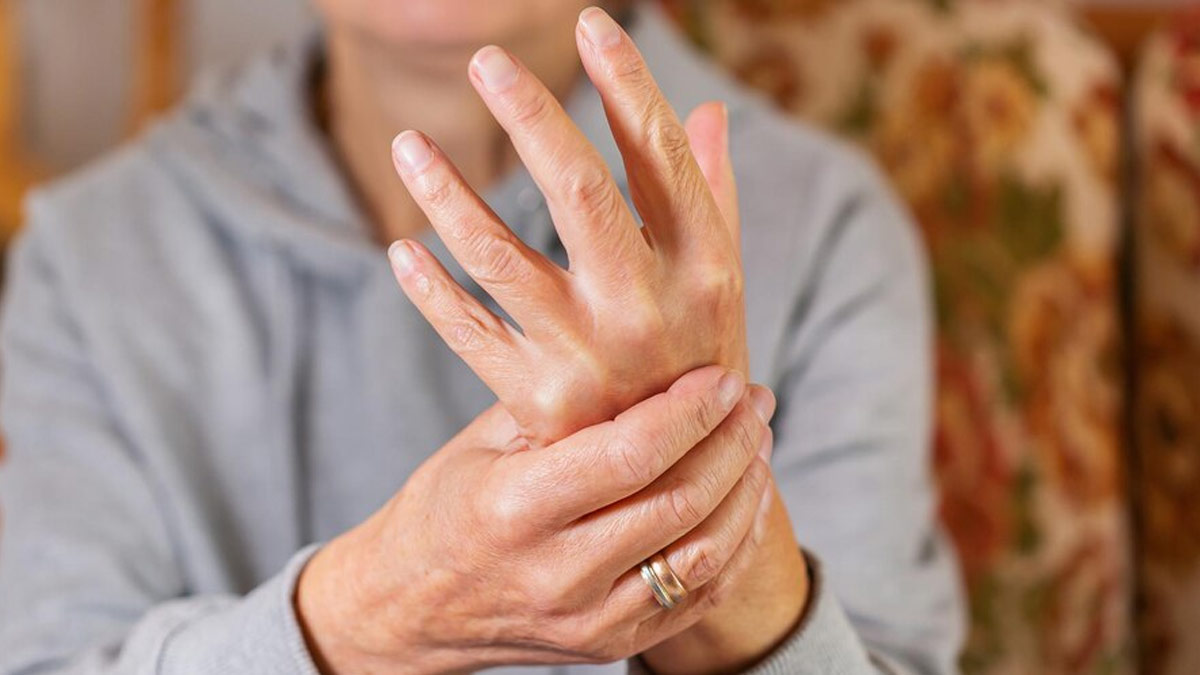

Psoriatic arthritis is an arthritis condition which affects people with psoriasis. This inflammatory condition can worsen psoriasis symptoms. It significantly impacts the lives of individuals in India. A considerable number of people in India suffer from psoriatic arthritis, with prevalence rates ranging from 0.5% to 2.5% among the population. However, despite its prevalence, psoriatic arthritis remains underrecognized and undertreated. It is imperative to raise awareness to ensure early diagnosis, appropriate management, and improved quality of life for those affected. Onlymyhealth spoke to Dr Abhinandan S Punit, Consultant Orthopaedic Robotic Joint Replacement Surgery, Sports Medicine, Narayana Health City, Bangalore to know about psoriatic arthritis in detail.
What causes psoriatic arthritis?
The cause of psoriatic arthritis remains multifactorial. Genetic predisposition, immune system dysregulation, and environmental triggers play significant roles in its development. Individuals with a family history of psoriasis or psoriatic arthritis are at a higher risk. This type of arthritis can affect individuals of any age but it most commonly manifests between the ages of 30 and 50.
People who have psoriasis need to look for early signs of arthritis to prevent the condition.
Here are some parts of the human body that are most likely to get affected by psoriatic arthritis:
- Skin: Psoriatic skin lesions may be present, varying from mild to severe manifestations.
- Nails: Nail changes, such as pitting, crumbling, or separation, can occur.
- Eyes: Uveitis, an inflammation of the eye, may develop, causing redness, pain, and vision changes.
- Spine: PsA can affect the spine, leading to stiffness, limited mobility, and potentially spinal fusion.
- Entheses: Enthesitis refers to inflammation at the sites where tendons or ligaments attach to bones, commonly affecting the heels and other joints.

Early Signs Of Psoriatic Arthritis
Early recognition of PsA is vital for timely intervention.
- Common signs and symptoms include joint pain, swelling, and stiffness, particularly in the fingers, toes, wrists, ankles, and lower back.
- It may also cause fatigue and generalised malaise.
- Morning stiffness, skin lesions, such as red, scaly patches or silvery plaques, nail abnormalities, including pitting or ridges are also experienced.
Timely diagnosis of psoriatic arthritis symptoms can help in preventing and slowing down the progression of this inflammatory condition.
Treatment of Psoriatic Arthritis

PsA necessitates a comprehensive and multidisciplinary approach to optimise outcomes. If you notice the potential symptoms, reach out to a rheumatologist for comprehensive diagnosis. The treatment of psoriatic arthritis involves rheumatologists who diagnose and manage PsA, prescribing disease-modifying antirheumatic drugs (DMARDs) and biologic agents, dermatologists to address psoriatic skin lesions, physical therapists to improve joint function, and psychologists for mental well-being.
Also Read: 4 Tips To Manage Chronic Inflammation With Psoriasis
In a nutshell, this is not something that can be managed by a single doctor. You need to consult different experts for effective control on the condition.
Watch this video to know doctor-verified tips to manage arthritis pain:
Conclusion
Psoriatic arthritis is a complex condition that affects multiple organs and requires a multidisciplinary approach for effective management. Early recognition of signs, collaboration between various medical specialists, and tailored treatment plans can alleviate symptoms, slow disease progression, and improve the overall quality of life for individuals living with psoriatic arthritis.
اكتشاف المزيد من ينبوع المعرفة
اشترك للحصول على أحدث التدوينات المرسلة إلى بريدك الإلكتروني.
